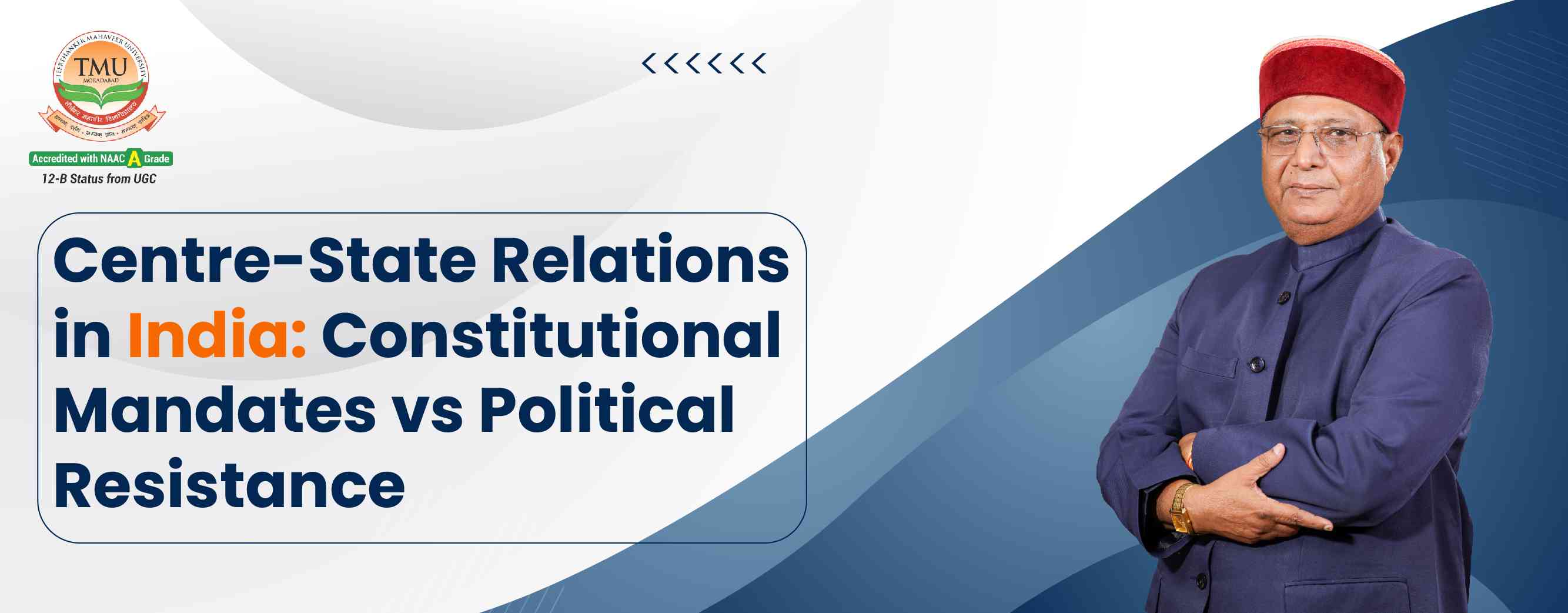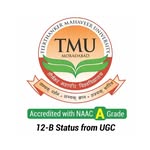Constitutional Directions vs. Political Resistance: The Centre-State Dilemma in India
Table of Contents
by Prof. (Dr.) Harbansh Dixit
In recent times, several Indian states have openly opposed the Centre’s constitutional directions, leading to an intense debate over the limits of federalism and the role of constitutional mandates. The resistance to policies like the National Register of Citizens (NRC) and the Citizenship Amendment Act (CAA) by certain state governments has brought this issue into sharp focus.
Recent Examples of State Resistance
States like West Bengal, after opposing the CAA, declared that they would not implement the National Population Register (NPR) either—arguing that NPR is the groundwork for NRC. Soon, other opposition-ruled states followed suit, raising an important question:
What are the Centre’s options if states refuse to comply with national-level policies?
Teerthanker Mahaveer University
Apply for Admission
Click Here To Apply for Admission
Federal Structure and Its Built-In Tensions
India’s quasi-federal structure often leads to ideological clashes between the Centre and various states. While these frictions are not new, they require constitutional clarity and political maturity to navigate.
The Constitution-makers anticipated such scenarios and accordingly embedded safeguards and obligations within the structure itself.
Relevant Constitutional Provisions
Let’s break down a few key articles:
Article 73
It defines the executive power of the Centre, extending it to all subjects where Parliament is competent to legislate, including international treaties and agreements.
Article 256
Mandates that states must ensure compliance with laws made by Parliament, and allows the Centre to issue necessary directions.
Article 257
States must exercise their executive powers in a manner that does not impede the Centre’s authority. The Centre can issue binding directions for national interest, military affairs, and communication safety.
Article 365
A critical provision—it allows the President’s Rule (under Article 356) in a state if that state refuses to comply with constitutional directions issued by the Centre. This underscores the legal consequence of defiance.
Can the Centre Directly Enforce Its Laws?
The Centre does not have the manpower to implement every law across every state directly. It relies heavily on state machinery to enforce its policies.
That’s why the Constitution includes Article 365—a powerful but cautiously worded clause. It provides the Centre a legal route to intervene, but also implies that political prudence should prevail before such action is taken.
No Precedent for President’s Rule on These Grounds
Despite constitutional backing, India has never imposed President’s Rule solely because a state refused to implement a central direction. Unlike other federal nations like the U.S. or Canada, where such conflicts are more frequent, India has shown remarkable restraint and consensus-driven resolution.
Historical Context and the Sarkaria Commission
The Sarkaria Commission (1983) was established to review Centre-State relations. While it raised concerns about misuse of Article 356, it found no need to amend Articles 256, 257, 365, as these had not been widely misused.
However, the Commission emphasized dialogue, cooperation, and constitutional discipline in addressing such tensions.
A Delicate Balance: Federalism vs. Political Will
Indian federalism respects the democratic decentralization of power, but constitutional unity must remain intact. Political leaders may resist central authority for electoral or ideological gains, but such resistance should not violate constitutional obligations.
When a Chief Minister publicly refuses to implement laws passed by Parliament, it sets a dangerous precedent, potentially encouraging other states to pick and choose what laws to obey.
The Bigger Picture: NRC, NPR, and Beyond
The debate over NRC and NPR has escalated into a test case for Centre-State dynamics. These are not merely administrative exercises; they’ve become political fault lines between the ruling party and opposition states.
The Centre now faces a pivotal moment to demonstrate constitutional leadership while respecting the federal spirit of the Indian republic.
Conclusion: Walking the Constitutional Tightrope
India’s constitutional design gives both the Centre and States defined roles, but in moments of conflict, wisdom must guide interpretation. The solution lies not in confrontation but in cooperative federalism, where:
- The Centre respects state diversity
- States honor constitutional obligations
- Political differences don’t paralyze policy implementation
“India’s federalism is strongest not when it is free from tension, but when it rises above them through consensus.”















